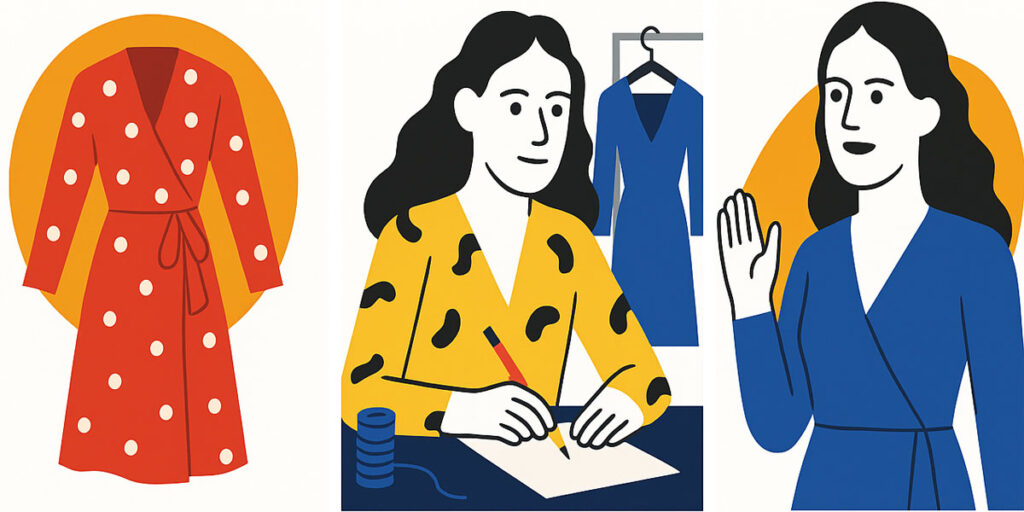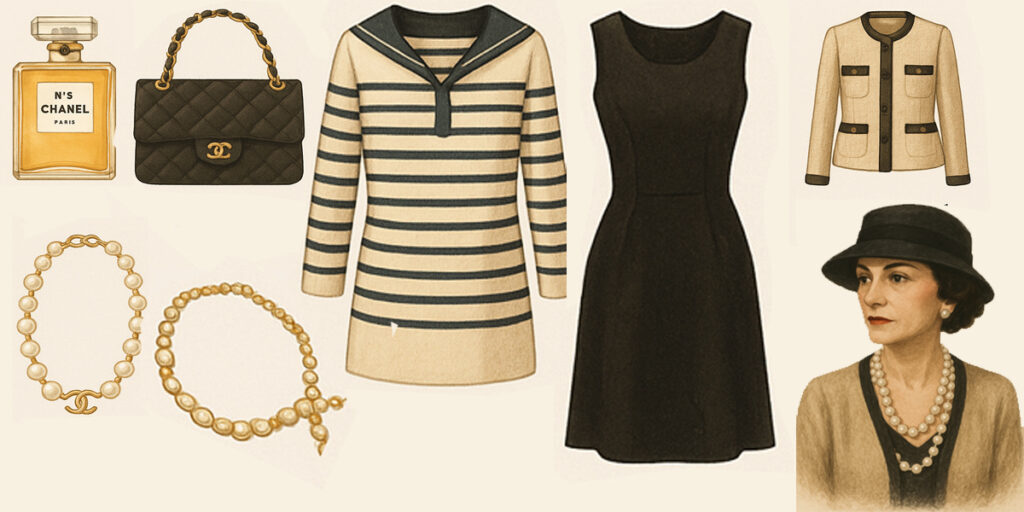In a world that often demands perfection before it allows greatness, Diane von Fürstenberg chose a different path. She didn’t wait for approval, she didn’t seek permission. Instead, she stepped forward with vision, wrapped herself in courage, and began to write her name into fashion history—not with a whisper, but with bold color, flowing fabric, and a dress that would become a symbol of power, femininity, and freedom.
Diane was born in Brussels, Belgium, in 1946, into a world still recovering from the devastation of war. Her mother, a Holocaust survivor, instilled in her the idea that fear should never be an excuse. That message burned into Diane’s soul. She knew from an early age that she wanted to be someone—someone strong, independent, and in control of her own life. It was not just ambition; it was a promise to herself, rooted in resilience.
In her youth, Diane studied economics in Geneva, Switzerland. But numbers could not contain her spirit. Her life changed dramatically when she married Prince Egon von Fürstenberg, a noble from a German royal family. Suddenly, she was a princess in title, but she never let that define her. What mattered to Diane was not the crown but the chance to carve her own future. And so, she turned toward the world of design, where her true calling waited.
By the early 1970s, Diane von Fürstenberg had arrived in New York. The city was buzzing with art, culture, and change. Women were stepping into boardrooms, raising their voices, demanding more. Diane didn’t just watch the movement—she dressed it. With a keen eye and fearless heart, she created something entirely new: the wrap dress.
It was a simple idea at first—soft jersey fabric, tied at the waist, hugging the body without buttons or zippers. But in its simplicity lay its magic. The wrap dress flattered every woman. It moved with the body. It celebrated curves. It offered elegance without restriction. And more than that, it allowed women to feel strong and sensual, all at once.
The world noticed. By 1974, Diane had sold over a million wrap dresses. Her name became a phenomenon, her design an icon. She wasn’t just a designer anymore—she was a symbol of a changing world. Fashion was no longer just about clothes; it was about voice, identity, and power.
Diane’s success came not only from her creativity but from her understanding of women. She never designed from a pedestal. She designed from the heart—from the same place where her dreams had once lived. She knew what it meant to want more. She knew how it felt to rise.
Her brand exploded in the 1970s, but as with all great journeys, there were seasons of stillness, of doubt, of change. The fashion world is fast, sometimes unforgiving. Diane’s empire shifted over time. But she never disappeared. Instead, she evolved.
In the 1990s, she reintroduced the wrap dress to a new generation. This time, women were chasing careers, launching businesses, and leading movements—and they embraced her again. Her dress had aged like wine: timeless, always in style, always relevant. And Diane, now a global figure, used her fame not just to dress women, but to uplift them.
She spoke openly about the importance of owning one’s life. In every interview, every appearance, every book she wrote, Diane reminded women: “Be the woman you want to be.” That phrase became a personal mantra and a cultural mission. Her voice grew louder in the world of women’s rights, and her influence spread beyond fashion into philanthropy and mentorship.
As chairwoman of the Council of Fashion Designers of America (CFDA), Diane nurtured young talent. She opened doors, shared wisdom, and championed diversity. Under her guidance, fashion became more inclusive, more honest, more reflective of the real world.
Her life was not without hardship—her marriage ended, her business faced challenges, the spotlight at times grew harsh. But Diane always returned to her foundation: strength, self-belief, and the dream of freedom. She once said that her mother had taught her that fear was not an option. That lesson echoed in everything she did, every decision she made.
Even as trends changed and seasons passed, Diane remained a fixture of style and strength. Her personal style—bright prints, flowing fabrics, a sparkle in the eyes—reflected her inner world. She loved color because she lived boldly. She loved fabric because it moved like life itself: unpredictable, wild, free.
Diane’s journey wasn’t just about fashion—it was about voice. She gave women a way to express themselves, not just through words, but through what they wore and how they wore it. A dress became a statement, a shield, a flag of confidence. She redefined femininity—not as delicate, but as dynamic.
Beyond the runway, she wrote books that inspired millions. Her memoir told the story not just of a fashion designer, but of a survivor, a creator, a believer. Her words carried the weight of experience and the lightness of optimism. She urged women everywhere to love themselves, to trust their instincts, and to chase their visions with open hearts and sharp minds.
In her later years, Diane took her influence global. She launched initiatives to support female entrepreneurs, spoke at summits on leadership, and partnered with organizations focused on education, freedom, and equality. Her mission became clear: to light the path for the next generation.
Through her designs, her leadership, and her voice, Diane von Fürstenberg became more than a fashion icon. She became a symbol of female power—a woman who rose, wrapped the world in her vision, and inspired millions to follow their own.
She once said that she didn’t know what she wanted to do, but she always knew the woman she wanted to be. That woman was brave, beautiful, generous, and free.
And so, the story of Diane von Fürstenberg is not just the story of a dress. It’s the story of becoming. It’s a reminder that style is not just fabric and thread—it’s strength stitched into the seams of every day. It’s the courage to wrap yourself in your truth, tie a bow around your dreams, and step forward, always forward, into the light of your own power.

